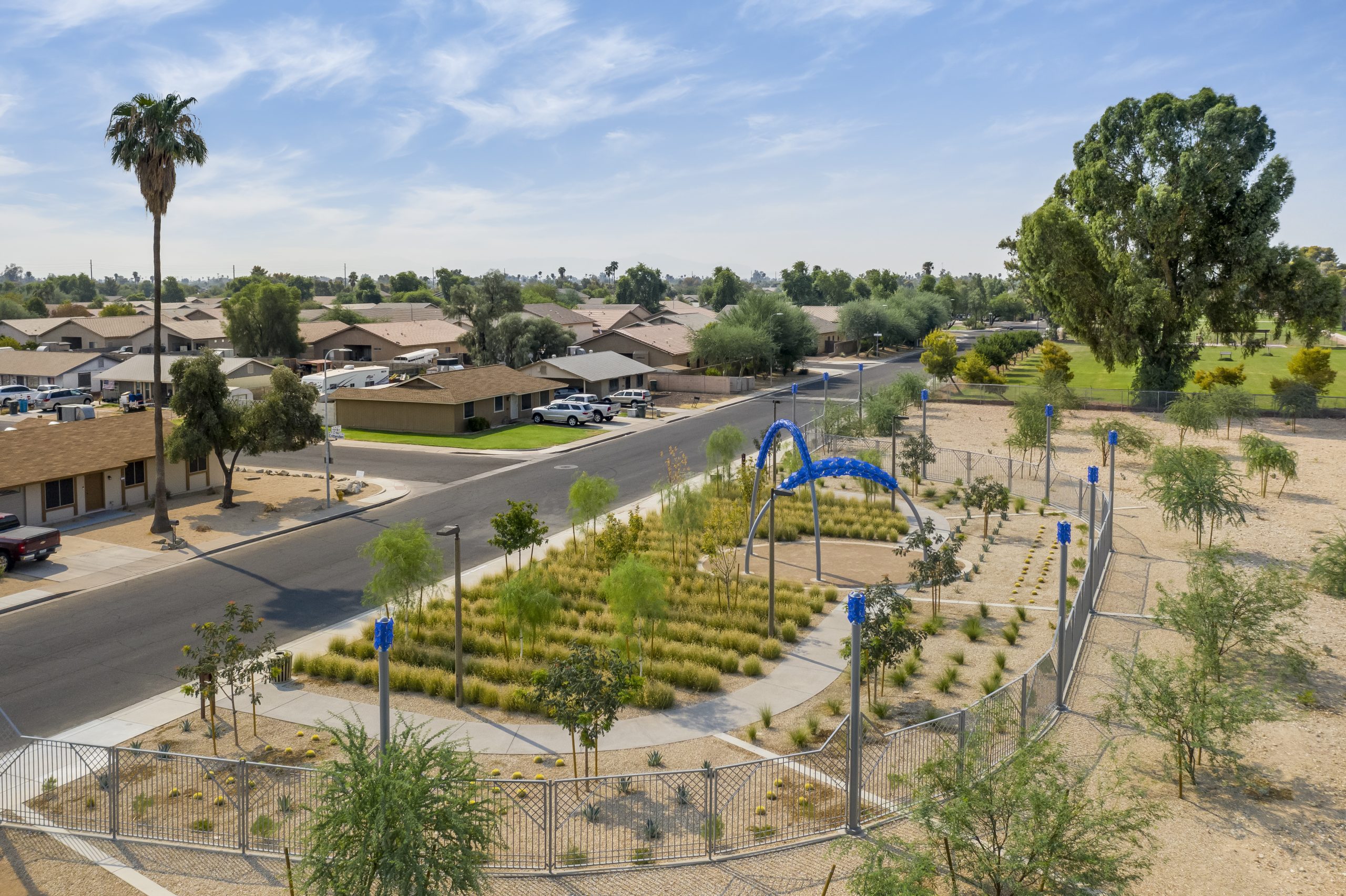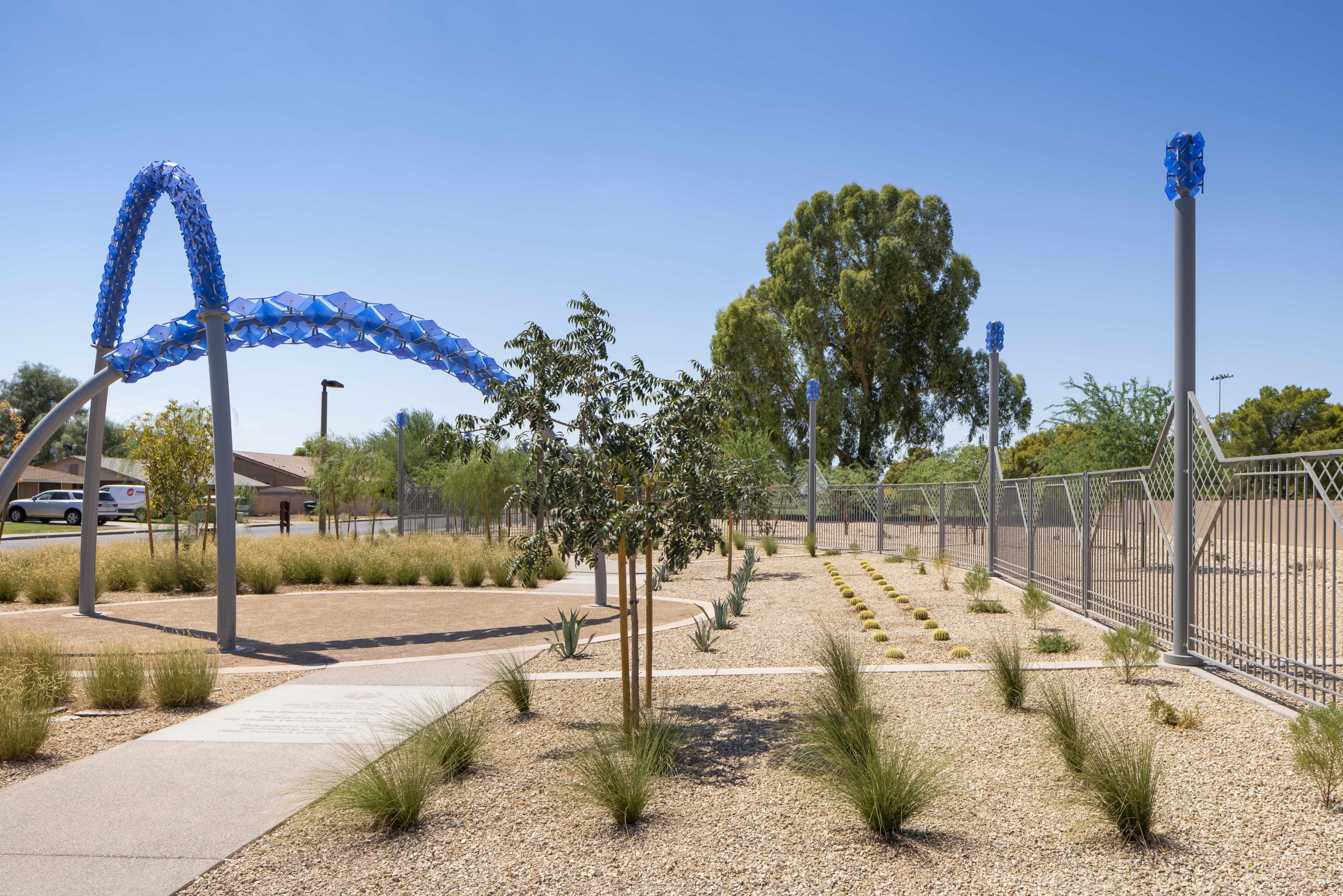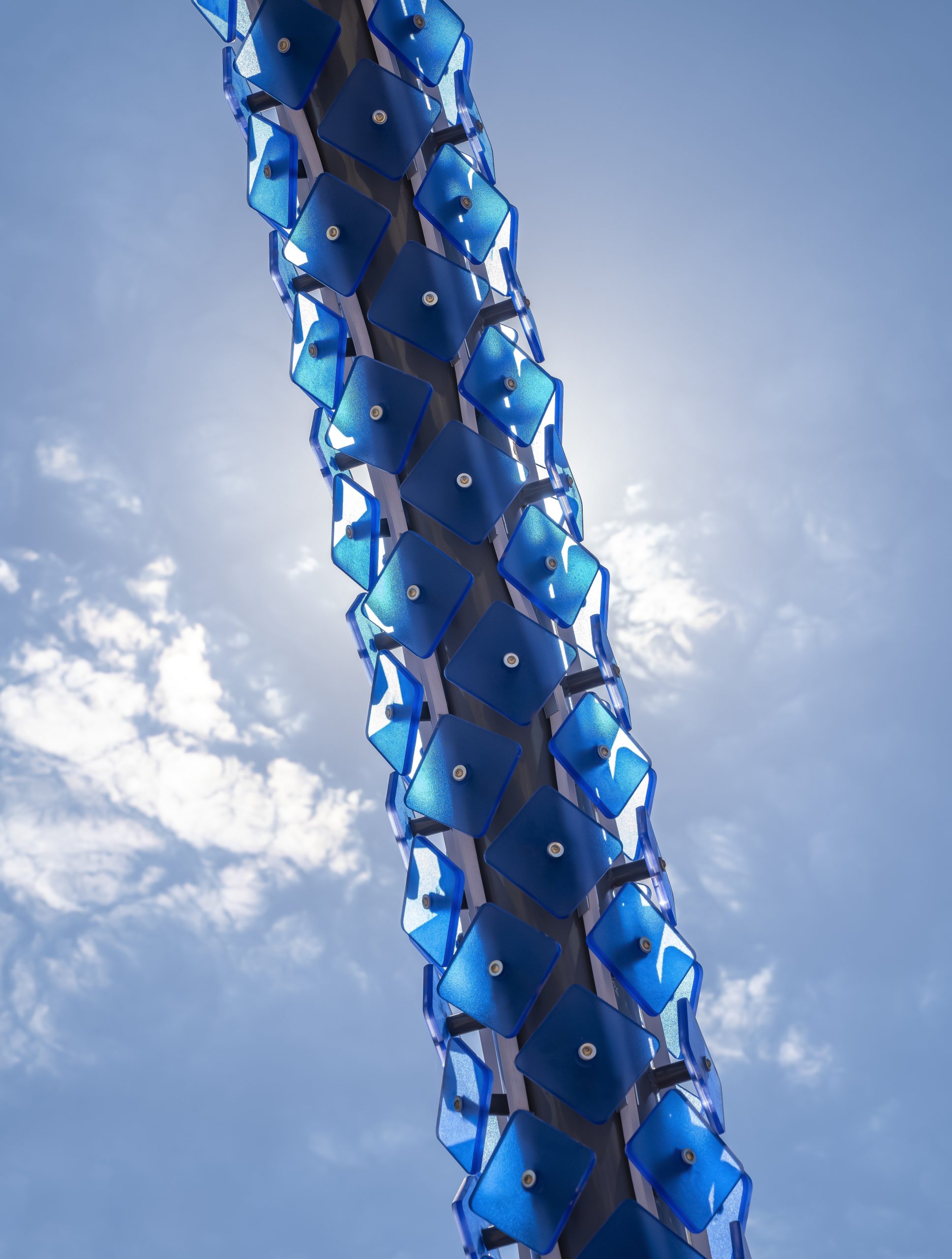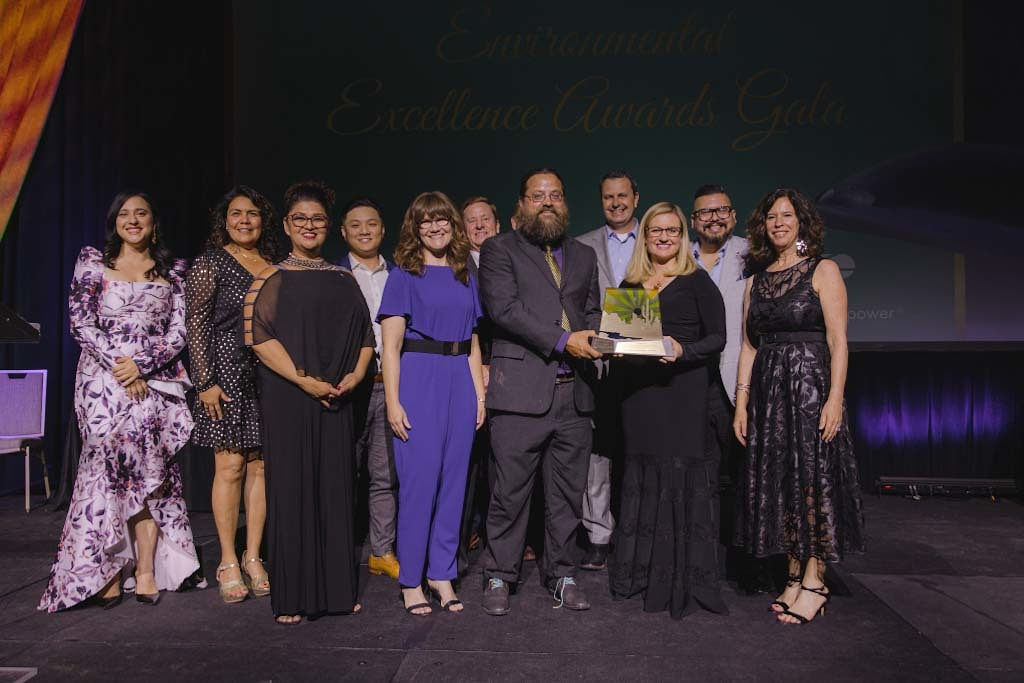





Client: City of Phoenix
Location: Phoenix, AZ, United States
Completion date: 2020
Artwork budget: $300,000
Project Team
Lead Artist
Bobby Zokaites
Zokaites Sculpture L.L.C.
Landscape Architects
Jeff Lothner
Dig Studio
Project Manager
Kathryn Stegall
Phoenix Office of Arts and Culture
Overview
The centerpiece of a municipal greenspace revitalization project, the sculptural arches of A Time Machine Called Tinaja provide a gateway, a portal, which celebrates the diversity of the neighborhood. In 2017, the City of Phoenix Office of Arts and Culture convinced the Water Department to clean up the old well sites, committing to assist with the renovations of three of these sites a year. As the design team lead, for the centerpiece of the lot, I decided to update a classic arch design with new materials. The surface was built onto the steel arches using polyurethane panels, mounted with custom standoffs to the structural pipe. This tapering surface is reminiscent of both a woven pattern and the spines of a cactus, an abstracted blend of local aesthetic motifs in space-age materials. At night, the arches are lit from within using Neon Flex lighting allowing for two dramatically different experiences. A tinaja is a small, usually water-filled depression in rocks in the desert. The largest one in the southwest is at EL Morro National Park; its reservoir holds over twelve thousand gallons. I chose this name not only in reference to the partnering City Water Department but as homage to the earliest settlers who relied on these geological features as they crossed the desert.Goals
The site is located just north of Oso Park, which is in between Trevor G. Browne High School and Estrella Middle School. The first time I saw the site there was nothing but pea gravel, a chain-link fence, and potential. There were very real, pragmatic issues to consider: it was a heat sink, at night there was no light, and uniquely, there is an adjacent archery range positioned in an unfortunate orientation in relation to this site. These are design concerns that have tried and true solutions—plant trees, add light poles, barriers—but what do these things
look like? What lens do we design through?
By repurposing this land, we solved local lighting and safety issues, and planted enough trees and vegetation to significantly reduce the amount of radiant heat coming from the site. Already, in the short time that the construction fence has been down (July 1, 2020), the abandoned house across the street that had been a blight on the neighborhood has been purchased and is being restored.
Because of the positive impacts of this project, A Time Machine Called Tinaja just won an Arizona Forward Award for Environmental Excellence in the category of Art in Public Places.
Process
Maryvale is the city’s urban center, the most diverse area, the most densely populated. In order to have an inclusive aesthetic, our team visited with neighbors and helped with community cleanups. One of the more generative sessions in the community was when we went to the nearby high school and spent the day talking to art classes about the problems of the site, how it was being used, and how they might like to see the site transformed. Several students indicated a need for “neutral” space. Because the site had been surrounded by a chain-link fence for so long, for many it was simply the “heat island” part of their walk; the dry, barren, hot expanse on their way to pick up their siblings from the middle school. However, in expressing this idea, someone also discussed thoughts of memory and nostalgia as they walk along 73rd avenue, and eventually, someone mentions a time machine. I decided to do just that — build a time machine.
Additional Information
As more of the world’s population become urban dwellers, creative infrastructural projects constructed with specific communities will become increasingly significant; as both markers of the unique character of neighborhoods and of the expertise of place possessed by residents. Participating in public art as a collaborator leads to the creation of uncommon, authentic and community-specific objects, unique markers of place. It is in this way that public art can serve additional social missions— by cultivating more inclusive senses of belonging and by demonstrating the power of individuals to create changes of dramatic impact and imagination in their built-environments. It is my hope to continue on a path that keeps me curious and sparks in others a question of what’s possible. Articulating the voice and vision of a community in a sculptural aesthetic that is big, bold, colorful and enduring feels like a beacon of that sense of hope. A Time Machine Called Tinaja transformed a single students’ poignant reflection on the local experience into civic design that will exist beyond both our lifetimes.